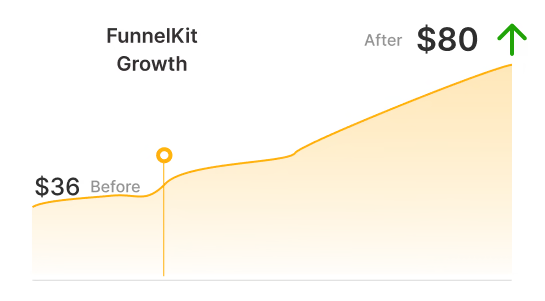
If you’ve not been living under a rock, you know that Gutenberg is here, it is big and it’s here to stay!
After we offered deep integrations with Elementor, Divi, and Oxygen, one request that repeatedly kept coming our way was to include Gutenberg blocks in our roadmap.
And hence here we are!
I must admit working on Gutenberg has been an exhilarating experience for us!
Here’s why:
- Gutenberg is new and ripe for innovation - You can unlock many new opportunities with Gutenberg blocks. It is ripe for development - there’s just so much one can still build on it!
- Gutenberg has a solid roadmap - There are four phases on the Gutenberg roadmap: blog post editing, full site editing, collaborative editing experience and finally, multilingual.
This makes Gutenberg absolutely worth exploring and also it gives an opportunity to teams like us to innovate. That's what we're doing here!
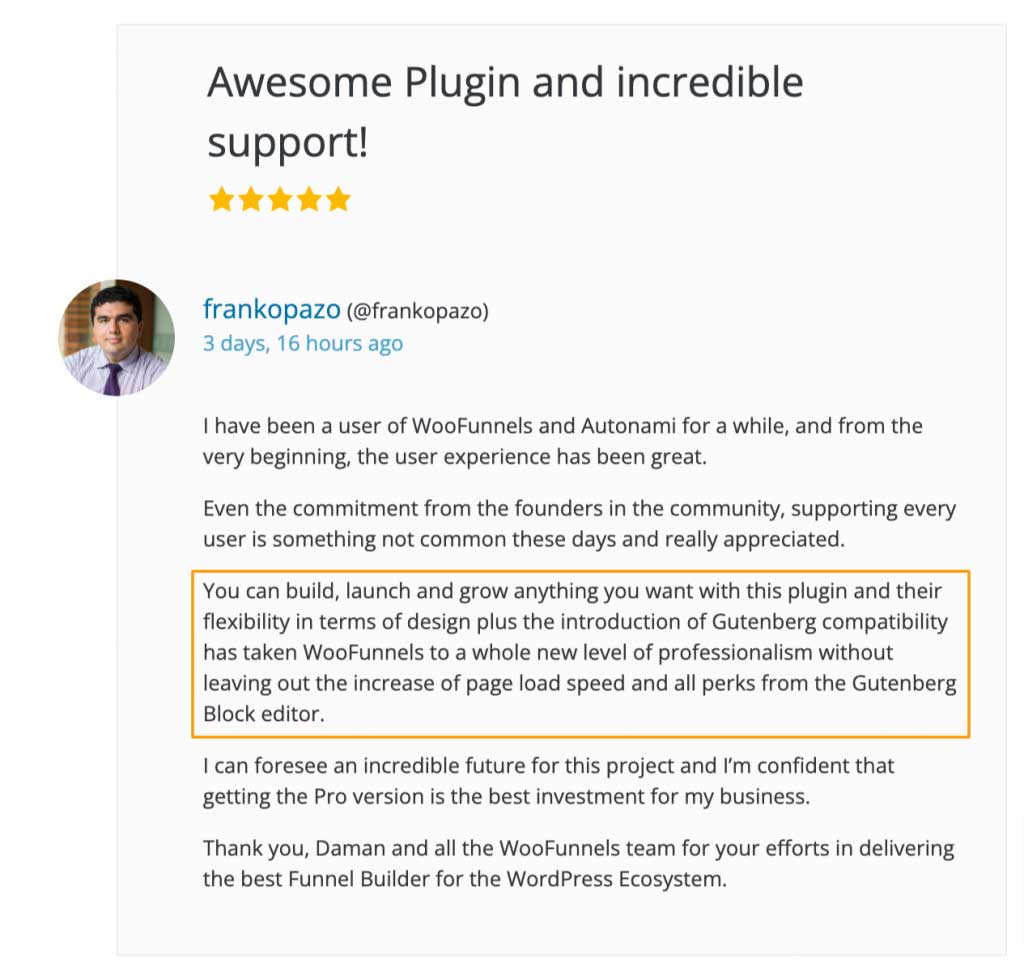
Watch this quick deep-dive video on the FunnelKit (formerly WooFunnels)-Gutenberg integration:
Table of Contents
- 1 The Backstory: How the Funnel Builder-Gutenberg Integration Came About?
- 2 We call this collection of Gutenberg blocks - SlingBlocks
- 3 Opt-In Page Gutenberg Blocks
- 4 The Checkout Page Gutenberg Blocks
- 5 One-Click Upsell Blocks for Gutenberg
- 6 Thank You Page Blocks
- 7 Other Gutenberg Blocks We’ve Built to Design Pages
- 8 Here’s to New Beginnings with the Gutenberg Blocks for Sales Funnels
The Backstory: How the Funnel Builder-Gutenberg Integration Came About?
Until WordPress made Gutenberg a default blog editor, we really had not used the beast.
But after it became the default blog post editor, we had to jump right in.
And oh boy, how impressed we’ve been with the intuitiveness of the tool!
Putting together a post does feel like a breeze when you can add Gutenberg blocks for headlines, buttons, columns, paragraphs, and for just about anything.
Gutenberg is WordPress’s answer to Wix, Squarespace, Weebly, and others.
But is Gutenberg also a serious page-building tool?
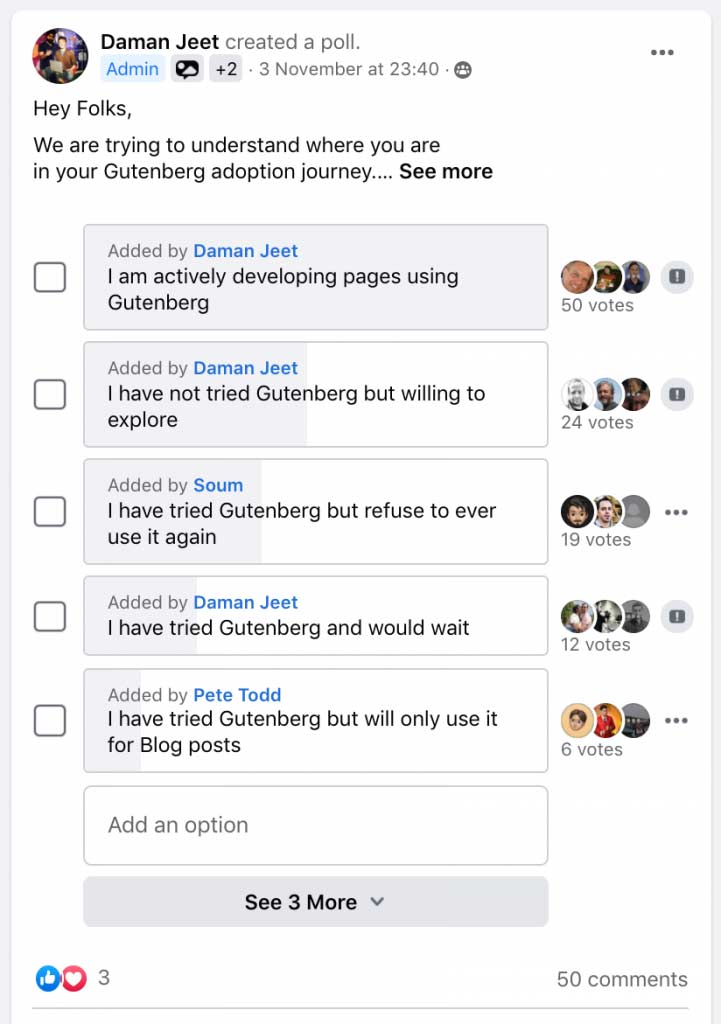
Especially when you have advanced page builders like Elementor, Divi, Oxygen, Beaver, and others.
The answer lies in its pre-built elements called Blocks. Gutenberg is as good as its blocks and as customizable as the block settings.
So when we started coding the integration of the Funnel Builder with Gutenberg, we had to create templates for the opt-in page, checkout page, one-click upsell and thank you page using it.
We needed Gutenberg to be a full-fledged and robust page builder, which honestly it wasn’t.
This led us to engineering solutions and building dedicated Gutenberg blocks to do jobs that needed to be done.
Building templates from the ground up led us to understand the challenges of people who were trying to use Gutenberg. So we built Gutenberg blocks with more thoughtful settings.
We call this collection of Gutenberg blocks - SlingBlocks
SlingBlocks are meant to catapult Gutenberg into its next orbit and give it some serious page-building capabilities.
So with much pride, it’s my absolute honor to introduce you to the SlingBlocks.
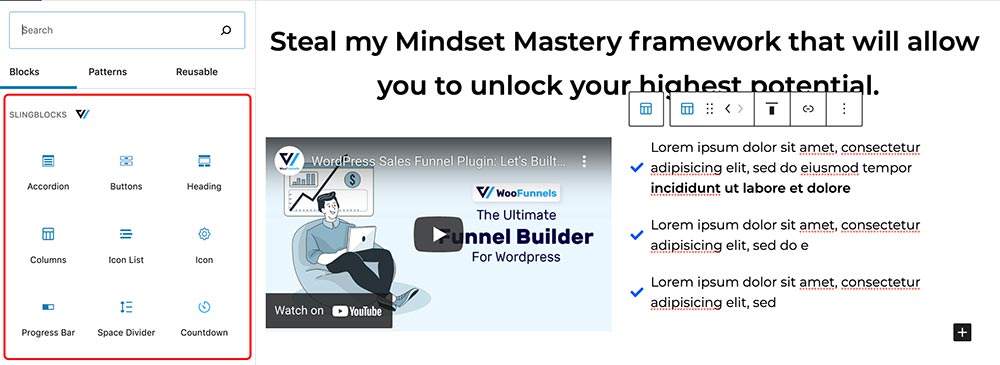
SlingBlocks are engineered to design slick funnel pages.
As we said, we started out to help you build your funnel pages and customize templates using Gutenberg blocks. But along the way, we uncovered many new opportunities to make the existing blocks better.
The result?
You can now expect a far superior designing and editing experience with SlingBlocks than without it.
From dividing your page into columns and defining spacing for inner columns individually to setting margin/padding for headlines - there’s a lot that you can now do!
First, let us look at what we have in our kitty for various pages of the Funnel.
Opt-In Page Gutenberg Blocks
For your Opt-in pages, we’ve built two SlingBlocks:
- Optin Form: To create embeddable sign up forms for collecting leads. You can have fields on your sign up form. Use the block settings to adjust form widths, add labels, modify the colours, typography and more.
- Optin Pop-up: To create pop-ups that show the form with the headline and the button. Use the settings of Gutenberg blocks to customise the light box. You can change heading, button, colours, animation for the pop-up and more.
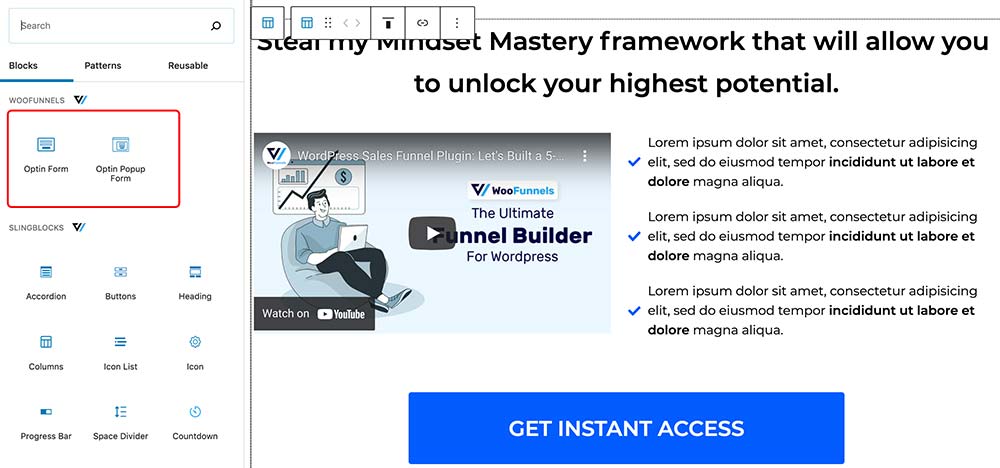
You will find two tabs under Settings to customize each block.
Use this tab to adjust the form field widths. You can make them full, half, or even one-third.
Further, enable label and placeholder text to guide users through your content.

Apart from that, you can adjust the field widths and buttons. In the submit button, add button text, subtext, add an icon, and more.
Here are the extensive and thoughtful settings for the button:
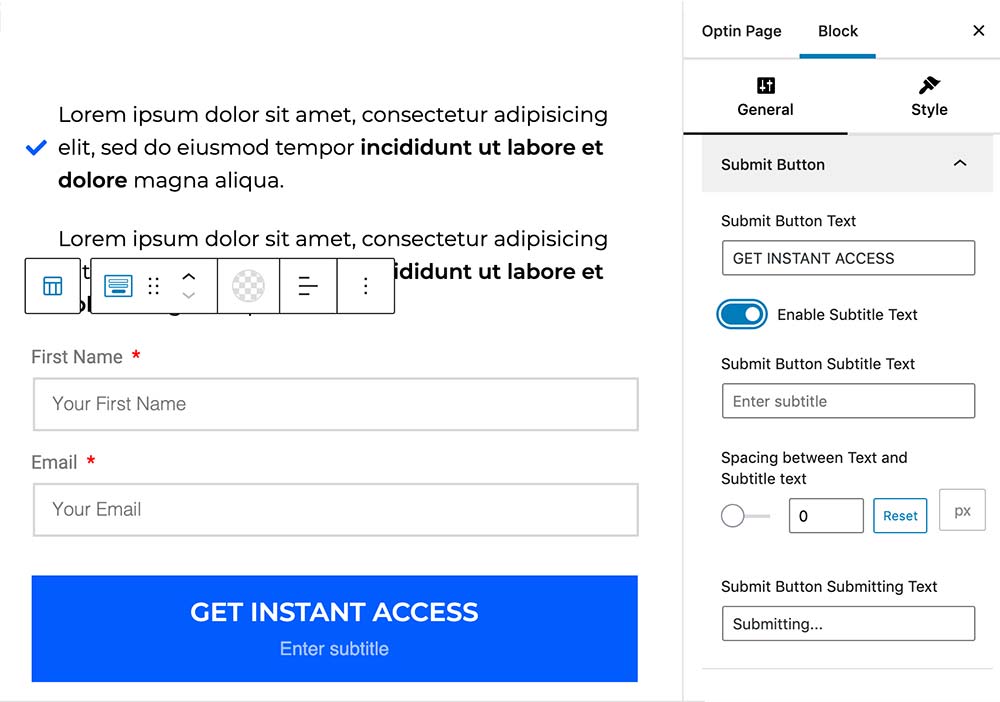
The style tab allows you to fully customize the form and the button. From changing its colors, typography to adding a radius to the button, adding offset, and more!
Make your forms look slick and presentable by playing in the style tab.
The Checkout Page Gutenberg Blocks
For designing your Checkout pages, you have two very useful SlingBlocks are your disposal:
Mini Cart: The Gutenberg mini cart block lets you add a cart to your checkout page. Here you can display the number of items being bought, item image, sub-total, taxes, and the total.
In addition, you can enable the delete option to let users delete a carted item.
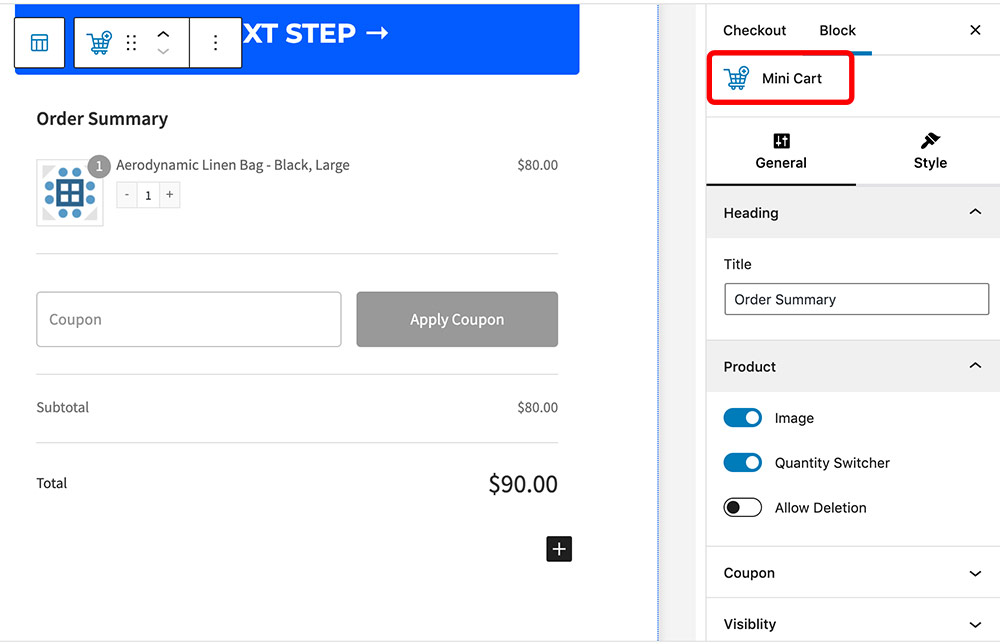
Here’s what you can do with the mini cart settings:
- Modify the title of the order summary section
- Show product image
- Enable quantity switcher to display the item count and to let users adjust it
- Allow item deletion
- Enable a coupon field in the collapsed or normal state
Checkout Form: The Checkout Form block allows you to add a form to your checkout page.
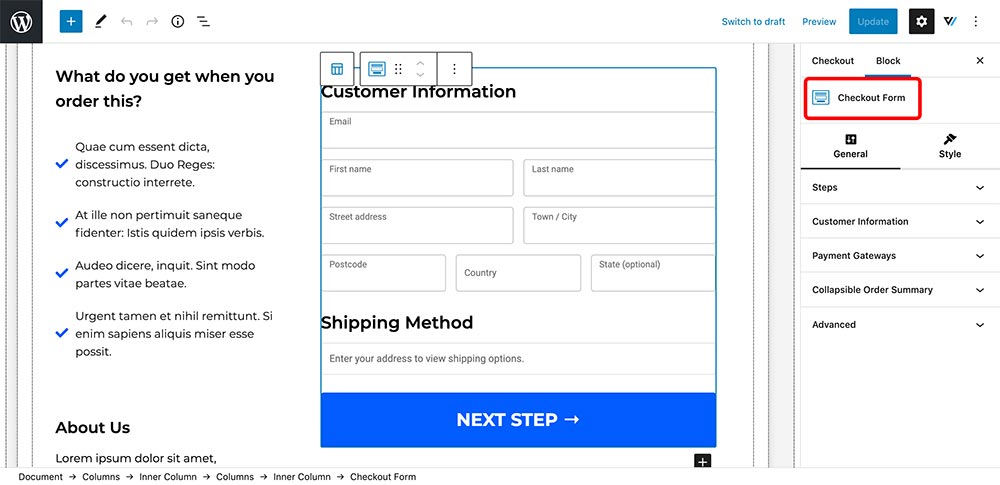
Here you can:
- Enable and disable the steps in case of a multi-step checkout form
- Adjust form field widths in the customer information section
- Customise the payment gateway section i.e write the payment button text, sub text and more
- Enable a collapsible order summary to show users carted items and more
Finally in the style section, modify the typography, font size, style, type, and more.
One-Click Upsell Blocks for Gutenberg
Your one-click upsell pages can’t be built with the regular Gutenberg blocks. You of course need custom blocks to design these special offer pages.
Here we have built 10 dedicated Gutenberg blocks just to build your upsell pages.
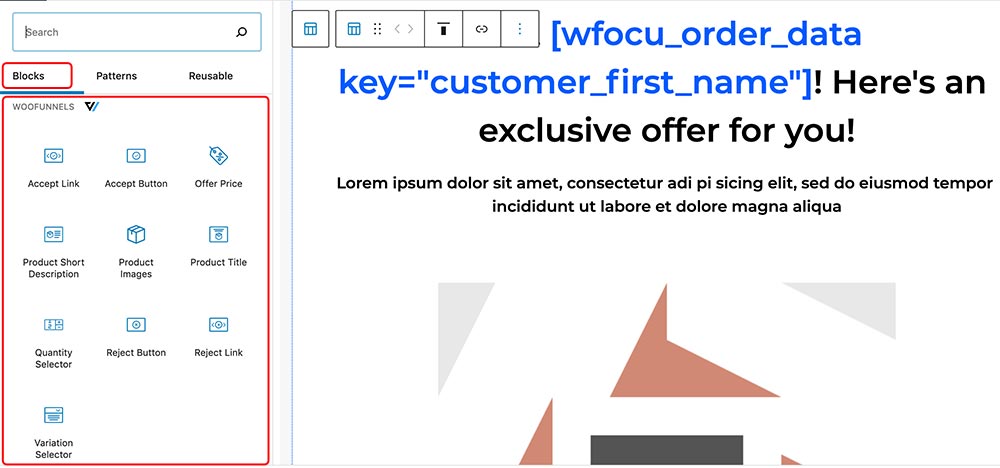
Let’s look at a few of them:
- Accept Button: This button block allows to display an accept button on the upsell page, upon clicking which the payment gets deducted instantly. You can add button text, change color, add an icon, border radius, and more.
- Offer price: Use this block to display the regular price and offer price in a stacked or unstacked manner. You can even strike through the regular price to show the discounted price.
- Product Images: Use this block to display the item images. You can enable the gallery to show more than one image of the product.
Thank You Page Blocks
There are two Gutenberg blocks for the thank you page that you can use to build your pages.
Order Details: This allows you to display the order-related details of the user. If a user is buying downloadable products, they can see required details in the section and if they're buying subscription-based products, again they can see those details on the Thank You page.
Customer Details: This block lets display all the customer details on the order confirmation page. The details such as their name, email, shipping, billing address, and more. Of course, you do have the option to show only certain details.
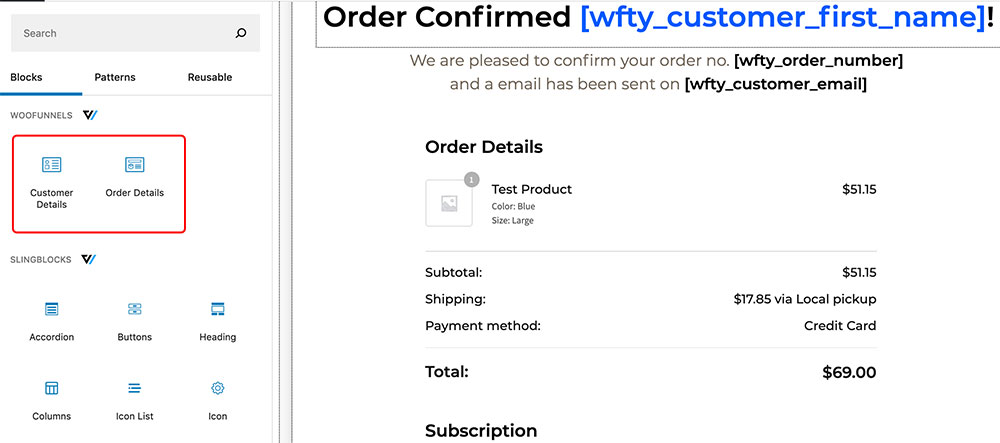
Other Gutenberg Blocks We’ve Built to Design Pages
Column Block
Gutenberg already has a block for inserting columns on the page. Here’s the Gutenberg block for inserting a column:
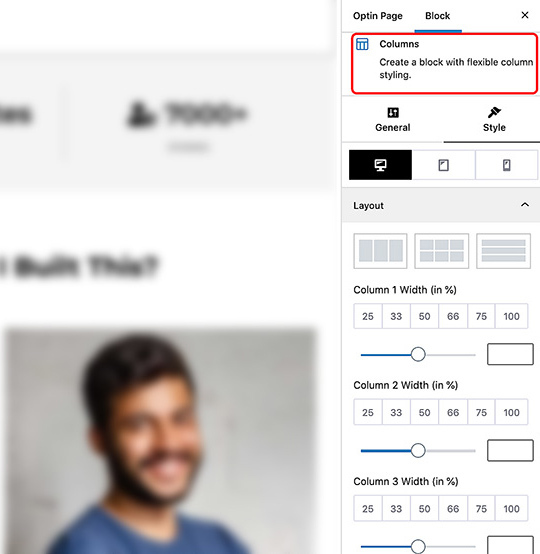
As you can notice it allows you to split the column into one or more parts and define their width in percentage. Apart from that, you can set the text color, background color, and a few other things.
But the column Slingblock is more advanced with more options to play around with. For starters, you can set the split percentage for the columns.
In spacing, define the margin and padding for the column, the z-index, background color.
Button Block
Again Gutenberg has its own block for buttons. But it only allows you to choose styles - fill and outline.
Apart from that you can set the typography, border settings, add text color, background color, and even adjust the width.
But when you use the button block by SlingBlocks, a world of customization options opens up. You can even define the button color, label color for the hover state.
Not just that, you may even add an icon to the button and restrict its visibility only to desktop or mobile. Using the button SlingBlock settings, you can set the horizontal and vertical offsets, blur and spread of your buttons, to create an effect.
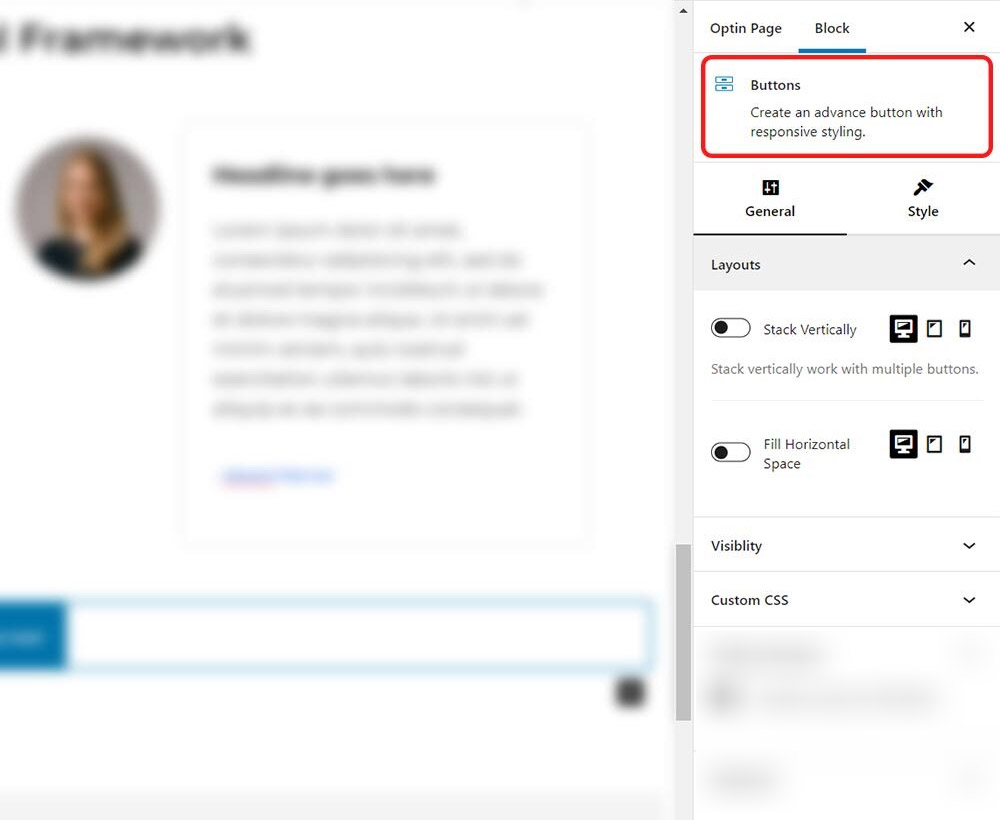
Heading Block
Gutenberg has a block for editing your headline. But it doesn’t let you add any spacing to the heading block.
But if you insert the heading SlingBlock, you can add the margin, padding, set Z-index to individual headings.
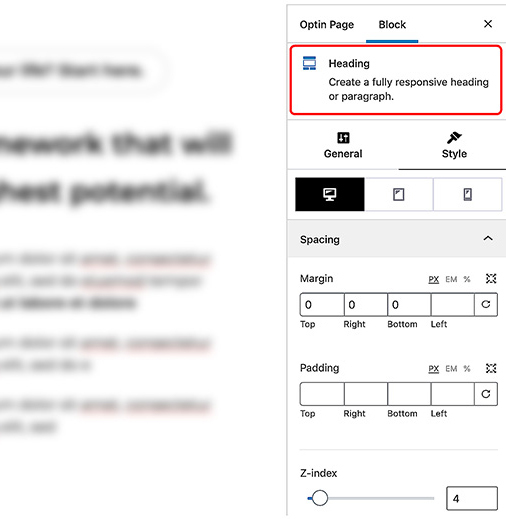
In the style tab, you can customize the colors, typography, and more.
Here’s to New Beginnings with the Gutenberg Blocks for Sales Funnels
So that was just a very quick look at what’s brewing at the FunnelKit (formerly WooFunnels) HQ. We hope that you're as excited as we are about the Gutenberg-Funnel Builder integration!
SlingBlocks at the moment is a collection of only 24 blocks, most of which are specific to funnels.
But general blocks such as those for headlines, buttons, columns, and more give us confidence that Gutenberg can have superior page-building capabilities in no time.
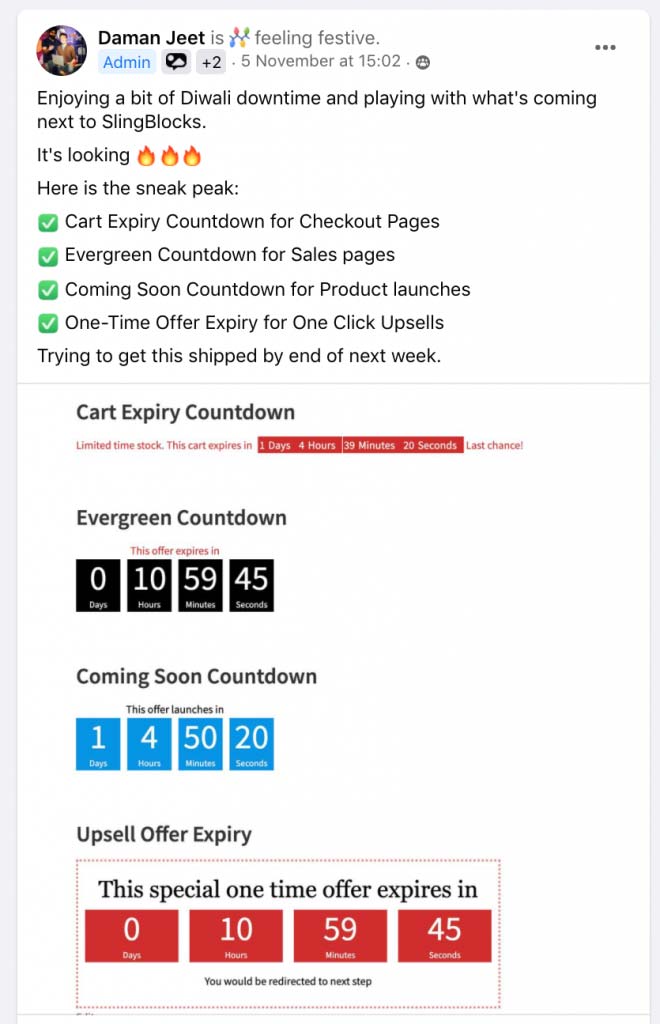
We can’t wait to share more updates in this space about Gutenberg blocks and are stoked about being able to help you build pages that boost conversions.
If you don’t have Funnel Builder yet, try the free version. And if you wish to upgrade to the full feature version, check it out here.
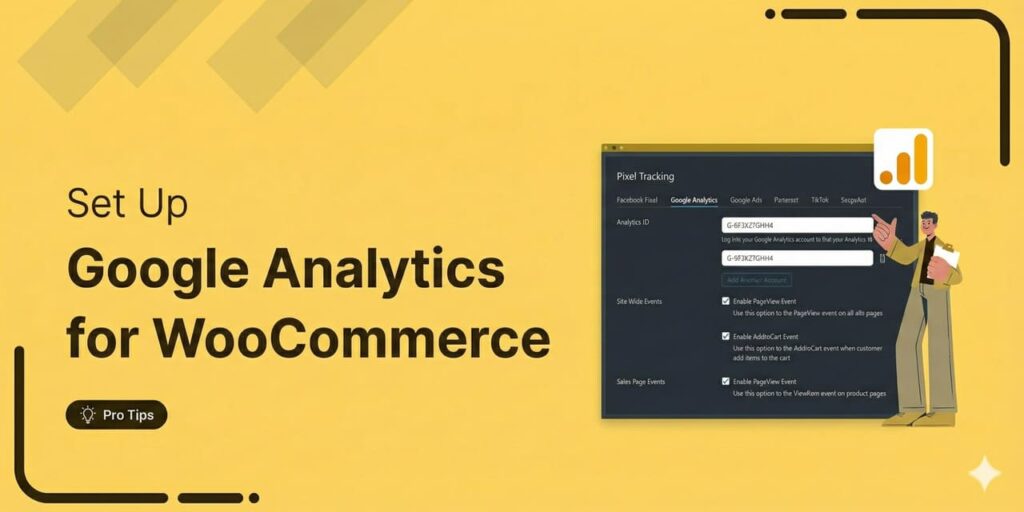
Editorial Team
December 22, 2025Do you want a reliable WooCommerce Google Analytics integration that tracks real customer behavior (not just page views)? Many WooCommerce stores install Google Analytics but never configure it correctly for...
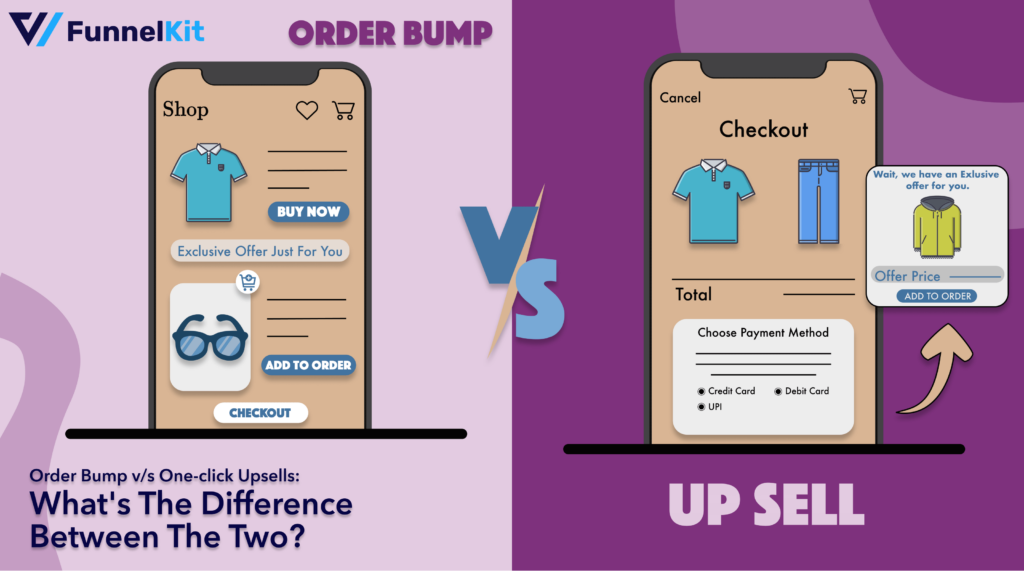
Editorial Team
December 17, 2025Order Bump v/s One Click Upsell: Which one to choose? We got this question from a handful of our customers: "What's the difference between a one-click upsell and an order...
Editorial Team
December 17, 2025You’ve launched your Pinterest campaigns and the clicks are coming in, but your WooCommerce dashboard and Pinterest Ads Manager tell two completely different stories. This is one of the most...

